Radiant energy or electromagnetic radiation (EMR) is the energy that is transmitted without the movement of mass.
In layman’s language, this is the energy found in light (visible waves) or radio and x-ray (invisible waves). The energy is carried in particles called photons.
Almost anything that has temperature gives off radiant energy. So, some of the most common examples of radiant energy include the warmth that radiates from sunlight, heat from a stove, microwaves, home heating units, the heat created by our bodies, heat generated from bulbs, etc.
On the other hand, chemical energy is stored in the bonds between molecules and atoms in substances. It is released during a chemical reaction, where these bonds are broken.
Like other types of energy (kinetic, potential, thermal, etc), radiant energy can be transformed or converted to other forms of energy. For instance, it can be converted to chemical energy and vice versa.
We know that fuels like wood, petrol, coal, or natural gas contain chemical energy, which changes to radiant energy (in form of light and heat) when they get burned. But are there radiant to chemical energy conversion examples that we can identify within our immediate environments?
The short answer is yes, there are plenty of examples! And here are eight conversions of radiant to chemical energy examples.
1. Biomass from Plants

Plants harness light energy from sunlight through a process called photosynthesis. They absorb radiant energy through their leaves using the help of the green color called chlorophyll.
Then they transform the energy into chemical energy.
The chemical energy is stored in their molecules within the plant cells. This energy can be stored in the fruit and food that animals and human beings take.
2. Solar Power Production
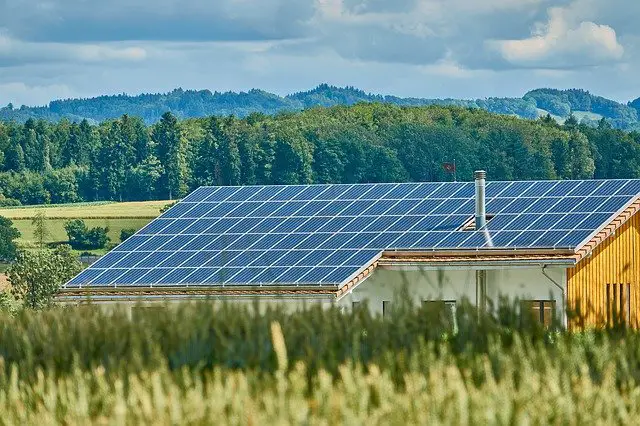
Solar power makes use of radiant energy to produce electric energy for lighting and running equipment.
To tap the energy, silicon photocells are placed at a location where there is enough sunshine. These cells convert the radiant energy into electric power.
The power then moves through the electric cables to the solar battery, where it is stored for use later on.
Therefore, solar power is converted into two types of energy; first from radiant to electric power, then from electric energy to chemical energy for storage.
The chemical energy can then be converted to electricity for use at home.
3. Human Vision

Human vision requires radiant energy to see. It makes use of the visible wavelength that is reflected from the object to the eye.
When radiant energy enters the eye, it is converted to chemical signals at the back of our eyes.
The chemical signals are transferred to the mind through the optical nerves for interpretation. This allows you to differentiate objects by looking at them.
Eyes use the iris to control the amount of radiant energy that gets in to enhance safety.
4. Sun Tan

When you get a tan, your body receives radiant energy in the form of ultraviolet rays from the sun.
The UV energy is absorbed by the skin and excites the melanin cells under the skin.
The melanin converts the radiant energy to chemical energy and gets to work harder to protect the skin. This causes the skin to get a chocolate tone.
The use of tanning beds can achieve a similar effect. However, remember that overexposure to UV light may damage the skin.
5. Production of Biofuels
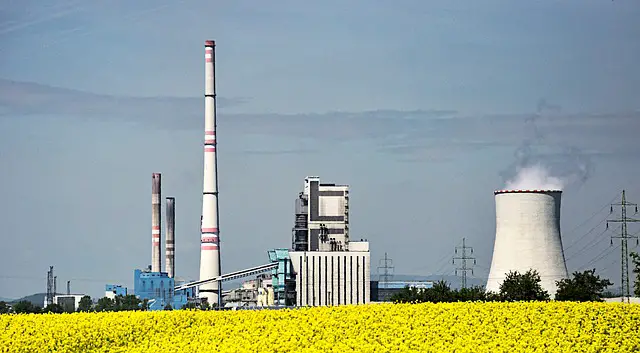
Biofuels are a form of chemical energy that is harnessed from plants. It is used as an alternative to conventional fuels.
The production of biofuels starts when the plant converts energy from the sun and store it within its cells. It can be stored in the stem, leaves, or fruits.
These parts are then pressed to produce oil. The oil is then refined for use in running various types of equipment.
6. Radiation Treatment
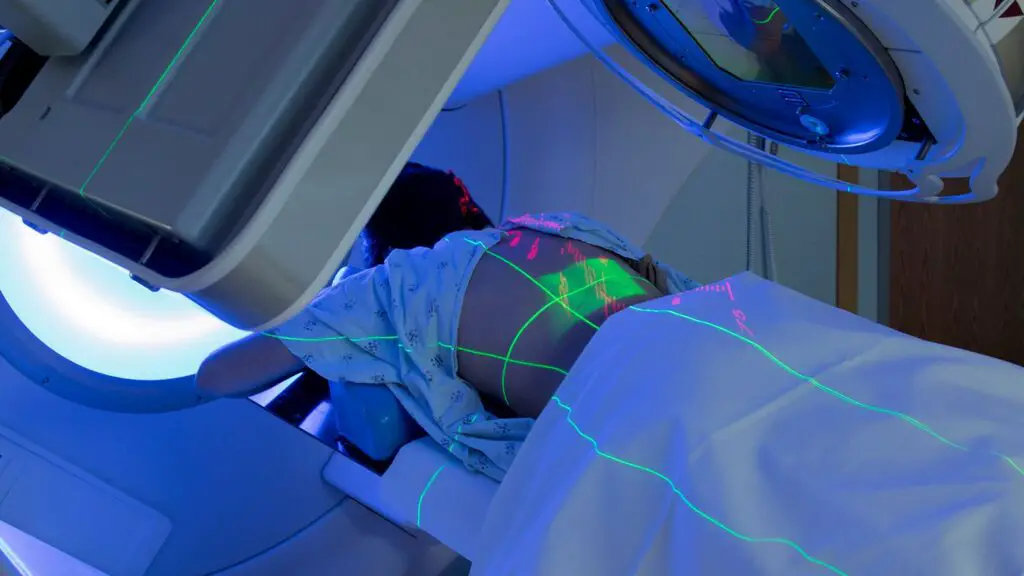
Radiation is used for the treatment of various conditions, including tumors and endocrine systems. Light therapy is also used in the treatment of multiple diseases.
Smaller doses of radiant light are used for the treatment of various skin issues to slow down aging.
The types of radiant energy primarily used in the radiation process include x-rays and gamma rays.
Once these rays penetrate the skin in the diseased parts, it is converted to chemical signals.
These signals stop the further production of cells and alter the chemical composition of different organs.
7. UV Horticultural Lighting
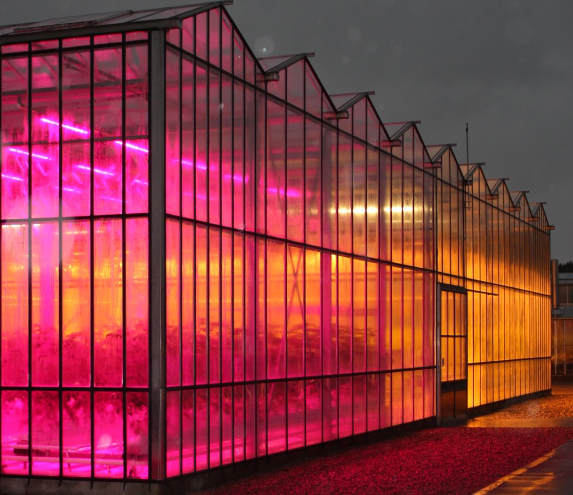
As explained in the section above, plants use radiant energy from the sunlight to synthesize food.
Where farmers want to grow food without depending on the sunlight, they may use artificial UV lighting in the place of the sun.
The UV LED bulbs emit light in wavelengths that are required for the plants to carry out photosynthesis.
Therefore, unlike the sunlight, the radiant energy emitted from the bulbs comes from electricity and is converted to chemical energy in the plant.
8. Vitamin D Synthesis
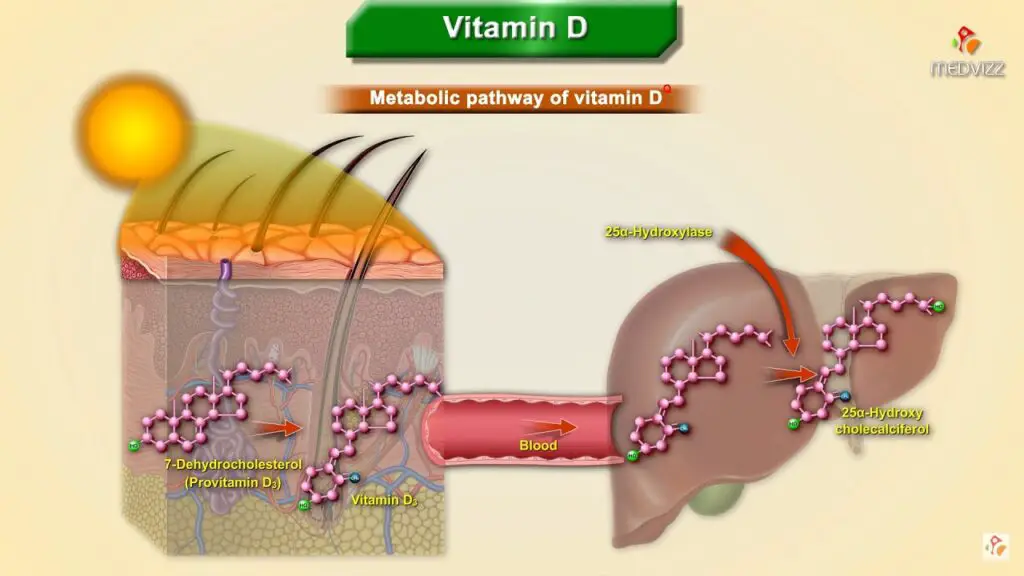
Source: 1
Apart from tanning, the human body can create Vitamin D through radiant light.
When the skin is exposed to sunlight, it forms Vitamin D3 from a derivative of steroid cholesterol found in the lower layers of the epidermis.
Vitamin D is vital in developing strong bones, strong muscles, and the prevention of muscle cramps.
Vitamin D synthesized in the presence of light is a form of chemical energy, which is then transmitted to other body parts.
Closing Thoughts
There you have it; a few excellent conversion of radiant to chemical energy examples.
Radiant energy does not involve the movement of atoms but can be absorbed and transformed into other energy forms.
Look for other examples around you where radiant energy is converted to chemical energy that can be stored and later used to power other tasks.

